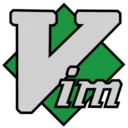Vim Functionality Overview
Vim is a highly advanced text editor designed to enable users to edit text efficiently and with precision. Originally developed as an improved version of the vi editor for Unix systems, Vim has evolved into a robust tool widely used by programmers, system administrators, and technical writers. It supports a vast array of programming languages and markup formats, offering syntax highlighting, code folding, intelligent auto-completion, and powerful search-and-replace capabilities with regular expressions. Its modal editing system allows for lightning-fast navigation and manipulation of text without the need to switch between keyboard and mouse.
Vim Key Features
Vim stands out with its unique modal interface, where different modes (such as Normal, Insert, and Visual) allow users to perform specific tasks efficiently. It features a rich set of keyboard shortcuts that minimize hand movement, boosting productivity over time. The editor supports macros for automating repetitive tasks, split-screen editing for multitasking, and integration with external tools like compilers and version control systems (e.g., Git). Plugins and scripts written in Vimscript or Lua further extend its functionality, enabling everything from debugging support to project management within the editor.
Vim Advantages and Highlights
One of Vim's greatest strengths is its speed and responsiveness, even when handling large files or running on low-resource systems. Its lightweight footprint ensures fast startup times and smooth performance. The ability to run in both GUI and terminal environments makes it versatile across different workflows. Vim’s extensive documentation and built-in help system make learning accessible, while its global community continuously contributes themes, plugins, and tutorials. Its compatibility with Unix-like systems and full functionality on Windows make it a favorite among cross-platform developers.
Why Choose Vim?
Vim is recommended for users who value efficiency, customization, and long-term skill investment. Unlike many modern editors, mastering Vim provides lasting benefits through muscle memory and workflow optimization. It integrates seamlessly into development pipelines and server environments where graphical interfaces are unavailable. With decades of active development and widespread adoption in the tech industry, Vim remains a trusted tool for serious coding and text processing tasks.
User Reviews Selection
A developer from GitHub mentioned: 'After switching to Vim six months ago, I can't go back. The initial learning curve was steep, but now I edit code faster than ever.' On Reddit, a sysadmin shared: 'Vim is my go-to when I SSH into servers. It’s reliable and always available.' A user on Softpedia noted: 'The plugin ecosystem is impressive—once you get past the basics, the sky's the limit.' Another reviewer commented: 'I use Vim for writing documentation and scripts. Its stability across platforms is unmatched.'
Vim Supported Operating Systems
Vim runs on multiple platforms, including Microsoft Windows (7 and later), macOS, Linux, and various Unix-based systems. It operates both as a standalone application with a graphical interface and within terminal emulators, making it ideal for remote server management and local development alike.
Vim Language Support
The interface and documentation are primarily available in English, but Vim supports editing text in virtually all languages, including those with non-Latin scripts such as Chinese, Arabic, and Cyrillic. Users can configure input methods and encoding settings (like UTF-8) to work seamlessly with international content.
Vim License Information
Vim is distributed under a free and open-source license known as the Vim License, which is compatible with the GNU General Public License (GPL). This allows users to freely use, modify, and distribute the software, including for commercial purposes, while preserving the rights of the original authors.
Is Vim Open Source?
Yes, Vim is fully open source. Its source code is publicly hosted on GitHub and maintained by an active community of contributors led by its original creator, Bram Moolenaar. Users can inspect, modify, and contribute to the codebase, ensuring transparency and continuous improvement.
Minimum Hardware Requirements for Vim
Vim is extremely lightweight. It requires minimal system resources: a 1 GHz processor, 512 MB RAM, and 20 MB of free disk space are more than sufficient. It performs well even on older hardware or headless servers without a graphics card, making it suitable for embedded systems and virtual machines.
Usage Tips for Vim
New users should start with the built-in tutorial by typing ':help tutor' in Vim. Practicing basic navigation commands (h, j, k, l) and common editing operations (i for insert, dd to delete a line, yy to copy) builds foundational skills. Utilizing .vimrc configuration files allows personalization of settings and key mappings. Installing plugin managers like Vundle or vim-plug simplifies adding new features. For enhanced productivity, learn how to use macros and search patterns effectively.
Frequently Asked Questions About Vim
Q: Is Vim difficult to learn? A: Yes, the initial learning curve is steep due to its modal nature, but consistent practice leads to significant gains in speed and efficiency. Q: Can I use Vim for modern web development? A: Absolutely—plugins support JavaScript, TypeScript, HTML, CSS, and frameworks like React and Vue. Q: Does Vim support mouse and GUI? A: Yes, GUI versions (like gVim) offer menus and mouse support, though keyboard-centric usage is encouraged. Q: Is Vim still actively maintained? A: Yes, regular updates and community contributions ensure it stays relevant and secure.
Vim Final Summary
Vim remains a premier choice for developers and power users seeking a fast, reliable, and deeply customizable text editing experience. Its blend of efficiency, portability, and extensibility ensures it continues to be a vital tool in modern software development and system administration. Whether working locally or remotely, beginners willing to invest time in learning will find Vim to be a rewarding and enduring companion in their technical journey.
